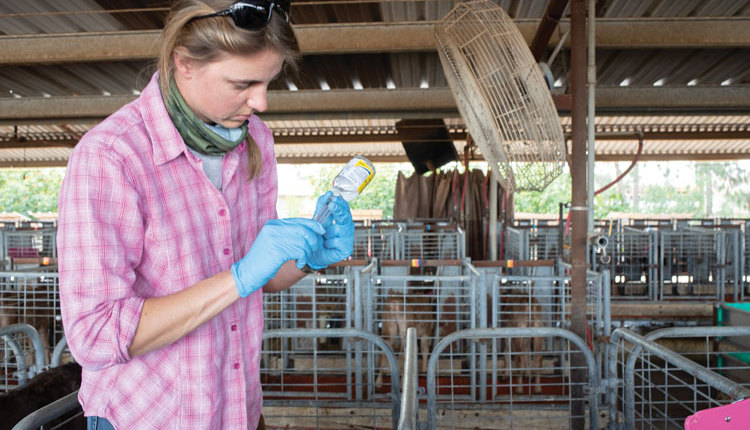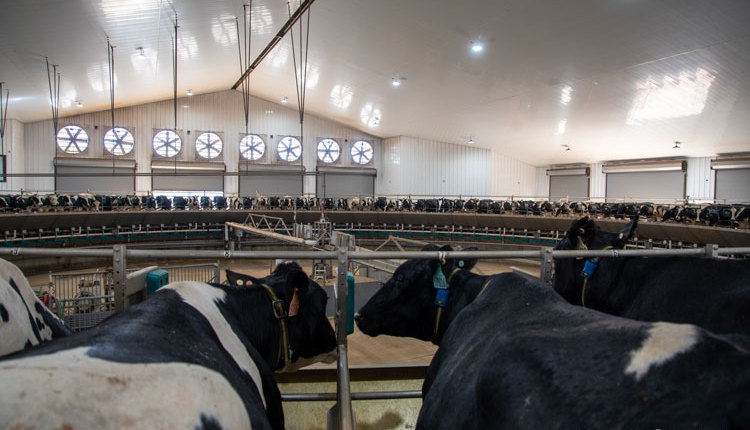The author is a vet who runs UdderWise-Global Mastitis Solutions, United Kingdom. To learn more about the author, visit his website at www.udderwise.co.uk.

Richard has to work out what could go wrong with any project and take steps to minimize this risk to a factor near zero . . . at least as much as humanly possible. Planning like this is just as important for dairy farmers.
High death loss
One of my veterinary colleagues told me about the deaths of five cows out of a batch of 12 that were dried off. The cows died within 48 hours following dry-off from Pseudomonas mastitis. The outbreak was traced back to the dry-off procedure.
Cows were sprayed with chlorhexidine teat dip, and teats were wiped dry using a reusable cloth before infusing antibiotic dry cow therapy and an internal teat sealant. The cloths had been washed in a washing machine at low temperatures to save energy costs. Swabs from the machine seals cultured high levels of Pseudomonas. This herd did not follow good practice and assumed that they would get away with their dry-off procedure.
It’s worth highlighting the correct way to dry off cows. You need the right equipment. This includes disposable gloves, leg bands, marker spray or another cow identification method, absorbent cotton and surgical spirit to disinfect the teats, internal teat sealant, and antibiotic dry-cow tubes. Some of our farmers wear a headlight so they can see the teats clearly if light is poor in the parlor.
Preparation is key and scrupulous hygiene during administration is essential. Always dry off at the end of milking to allow plenty of time to administer treatments. Drying off during milking is not advised as many people end up rushing the job.
Dry-off tips
My recommended procedure follows:
1. Milk the cows you plan to dry off at the end of milking so there is no time constraint or distraction.
2. Wear clean gloves throughout the dry-off procedure and replace them if they get dirty or torn.
3. Mark cows to be dried off before any treatment is administered so you know which cows are being treated.
4. Strip out all four quarters at the end of milking to check they are free from mastitis.
5. Predip all four teats, allow a contact time of 30 seconds, and then wipe dry with clean paper towel.
6. Now, carry out the procedure below one teat at a time starting with the furthest teat. This tip came from farmers who found it easier to complete the job one teat at a time.
7. Disinfect the teat end with cotton wool soaked in surgical spirit until no more dirt appears on the absorbent cotton. You may need to use a couple of pieces of absorbent cotton. The absorbent cotton must be clean after the last wipe. If not, clean the teats again by starting this step over.
8. Infuse and massage antibiotic dry cow therapy up the teat if this is used. It’s best to try and just put the end of the tube into the teat to avoid any possible damage to the teat canal.
If a teat gets dirty after dry cow infusion, then disinfect it again with absorbent cotton soaked in surgical agents before infusing the internal teat sealant. (See Step 7.)
9. Pinch the teat at the base of the udder and gently infuse the internal teat sealant so it remains at the base of the teat. Do not massage up into the udder.
10. Repeat on the remaining three teats, one teat at a time.
11. Apply postdip to all four teats.
12. Record all treatments.
13. Allow the cows to stand for 30 minutes and then gently move the cows to the dry cow group.
It’s important that everyone who dries off cows is properly trained. I like to explain what we are trying to achieve at dry-off, explain the process, and then demonstrate best practices. I then ask everyone to demonstrate it back to me so I know they fully understood the process.
We also give written standard operating procedures or SOPs for reference. It’s easy to become complacent and cut corners when drying off cows, which can have disastrous consequences like in the aforementioned case. Maybe this is a good time to review your dry-off routine.









